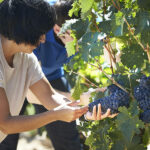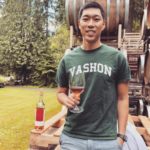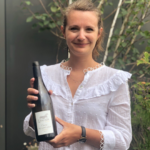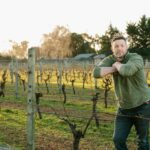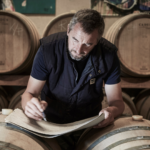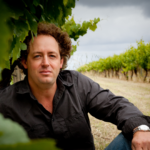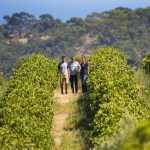Recent Offers
In Conversation With… Champagne Joseph Perrier

In Conversation with Benjamin Fourmon of Champagne Joseph Perrier

Founded in 1825, Joseph Perrier has been owned and run by the same family since 1888, and current director Benjamin Fourmon represents the 6th generation. Benjamin recently shared with us some insights and stories from behind the scenes at this esteemed family-run Champagne house.
Champagne Joseph Perrier owns 21 hectares of vineyards, situated in the heart of the region on the right bank of the River Marne, around Hautvillers and Cumières.
These two villages are classed 93% in the ‘échelle des crus’. They are mostly planted with Pinot Noir but include two hectares of Chardonnay, and the Joseph Perrier cellars stretch over three kilometres and date back to the Gallo-Roman period.
The chosen name for these cuvées is no accident, nor any false claim to grandeur – ‘Cuvée Royale’ alludes to the historic relationship between Joseph Perrier and Queen Victoria and King Edward VII, as the royals’ Champagne of choice – probably the highest honour any Champagne House can hope to earn. All the wines are made with a keen focus on freshness and purity, a theme which runs right through the range and really shows its worth in the vintage cuvées which show impressive energy and poise and remarkable ageing potential. Aside from the royal connection, Joseph Perrier has been associated with some pivotal events, which represent great human achievements, from the celebrations around Concorde’s inauguration in 1976 to, more recently, the Nobel Prize in Medicine.
The estate has been in your family for many generations. How was it growing up in the vineyards?
I grew up in the wonderful city of Reims but I remember visiting the family vineyards as a young boy with my father and, later, other growers when I was older. Our vineyard has been in the family for several generations, from 1888 when my great-great uncle, Paul Pithois, took over the family business and added his vineyards located in Cumières, Hautvillers and Damery. Since then our 23 hectares of vineyards have remained in the family.
Of course, harvest time is always exciting but I spend time throughout the year with Patrick Martin who is in charge of our vineyards and knows them very well; he has been with us for nearly 40 years this year.
Did you explore other opportunities as well or did you feel that you were destined to work in wine, given your family history with the vines?
Yes, I started out with a career in the world of banking and spent some time in the Far East, which was great fun. However, my father (the hugely likeable Jean-Claude Fourmon Ed.) always made it very clear that the door was open for me. Moreover, my grandmother encouraged me to take over the reins of this family adventure. In 2014 I started to work for Joseph Perrier learning about viticulture – officially – and then selling in Paris. Now I am leading the House towards its Bicentennial, which will take place in 2025!
How has the winemaking approach and the style of the wines at Joseph Perrier evolved?
That is in the hands of our chef de cave, the highly skillful Nathalie Laplaige, and though I am always involved in the tasting and creation of the blends, Nathalie is the boss here. She has made the style a little fresher, continued the trend of reducing the dosage, and above all changed the style of the Rosé to be more contemporary. This approach is winning so many new friends that we don’t have enough to meet the demand!
What makes your land in Hautvillers and Cumières different from that of your neighbours and how does this impact the wine?
Well, all our vineyards face south and that perhaps gives us a level of fruit in the style that is notable. My father had always noted the superb plot that we have in the Côte à Bras in Cumières and in 2008 we released out first single vineyard wine: a 100% Pinot Noir from a single vintage which is also Brut Nature. We make it every year, a maximum of 7,500 bottles – so this gives us a memorable record of the years.
What have been the biggest challenges and successes in recent vintages?
We don’t have to look far back for the challenges; 2021 was a very difficult year. We started with a very late frost, which affected mostly the eastern part of Champagne and this was followed by a warm wet summer, which resulted in mildew, mostly affecting the western part of the region. Our organic vineyards in Verneuil were very badly affected and the yields were tiny. But 2022 was terrifically sunny and we are tasting some very promising vins clairs at the moment.
What are the latest developments in the wider Champagne region?
The greatest work across the whole region is in the vineyards. At Joseph Perrier our vineyards have been certified VDC (Viticulture Durable en Champagne) and HVE 3 (Haute Valeur Environnementale) for a while now and a good percentage of our vineyards are organic. We will continue to work on this and I remain quite sure that this will be a focus for the appellation for the future.
How is the 2022 vintage shaping up?
As mentioned, we are tasting some very promising vins clairs from the sunniest vintage in recent memory, so we are very happy.
When you are not drinking your own wines, what else do you enjoy?
I am a great fan of white Burgundy, when I can find a friend to exchange with!




